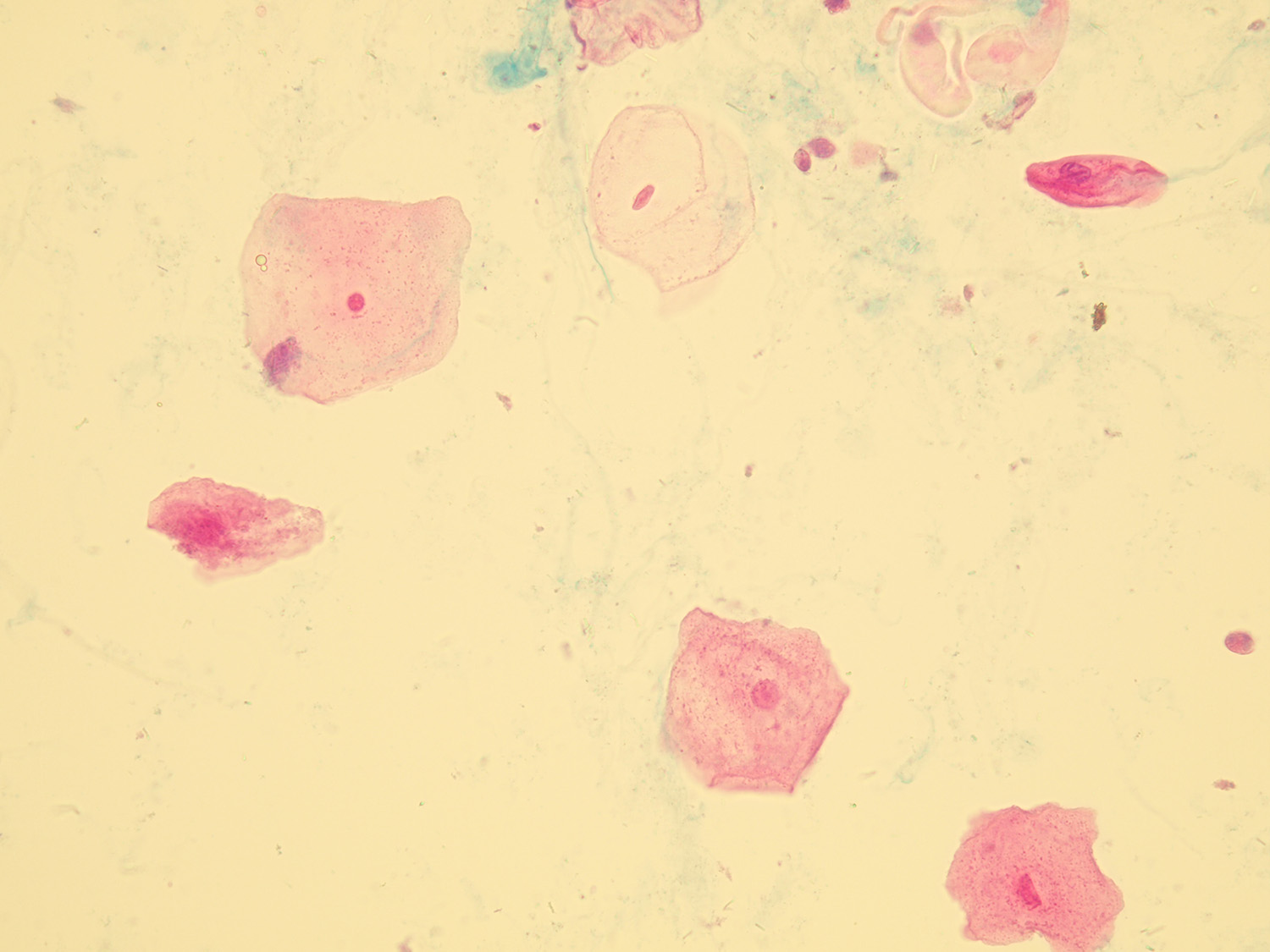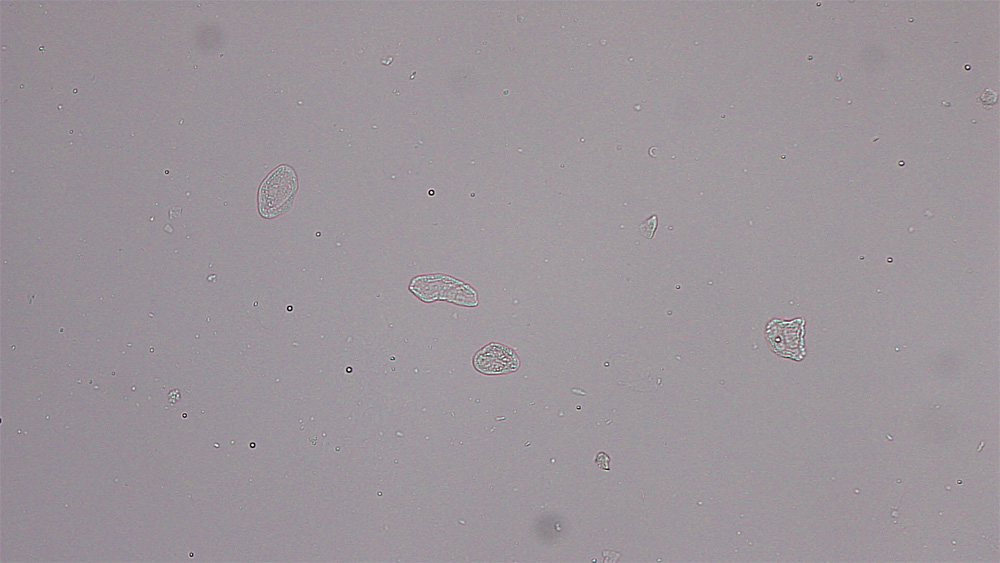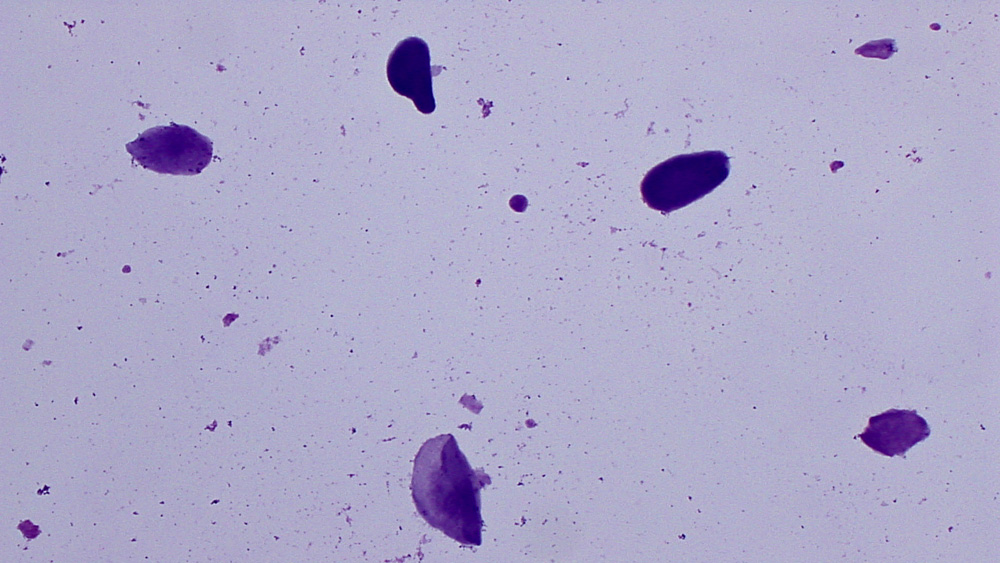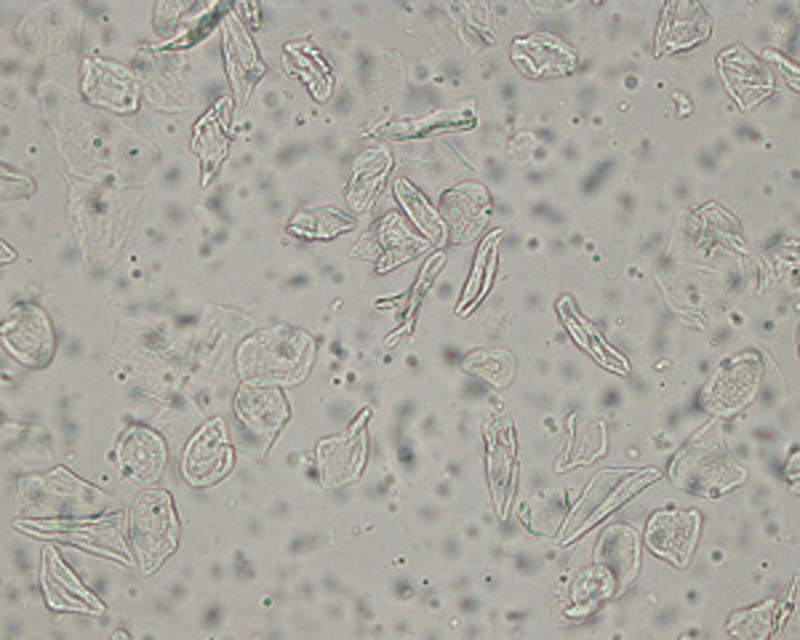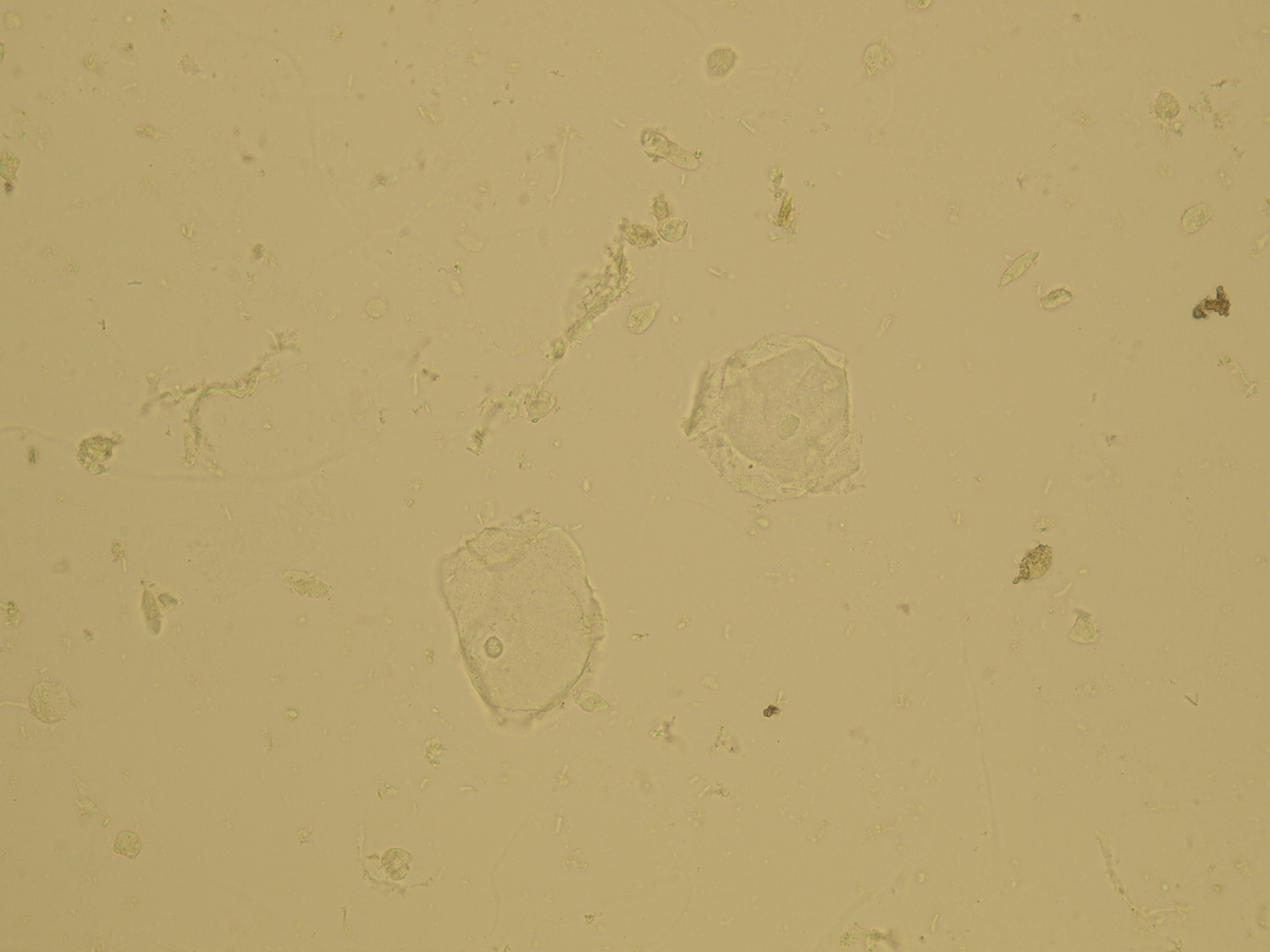A urinalysis is simply an analysis of the urine. It is a very common test that can be performed in many health care settings, including doctors' offices, urgent care. In contrast, the epithelial cells seen on the skin are squamous epithelial cells, that is, they are large and flat. Hence, the presence of columnar epithelial cells in the urine indicates the presence of a pathological condition associated with the kidneys or some other part of the urinary tract. urinalysis is a simple and noninvasive test that provides valuable information. epithelial cells, casts, bacteria, yeast, and crystals, and other about 10 mL of urine is Types of urine specimens. required for routine urinalysis. Urine specimens should be refrigerated if they cannot be examined within 2 hours because urine begins to. Squamous Epithelial Cells in Urine: What Does It Mean? A few epithelial cells from higher in the urinary tract and kidneys called transitional and renal tubular epithelial cells also sometimes appear in the urine due to normal sloughing. Infection While squamous epithelial cells in the urine are usually a normal finding, clue cells are an exception. Squamous: These are large epithelial cells that come from the vagina and urethra. They are the type most often found in a woman's urine. The test for epithelial cells in urine is part of a. Helpful, trusted answers from doctors: Dr. Lemeshev on urine epithelial cells 1 squamous epithelial: ABNORMAL PAP, secondary to yeast infection. Follow up with your doctor for treatment. Then recheck pap at a later date. What Is Squamous Epithelial Cells in Urine Test Used for? An epithelial cells in urine test is a part of a urinalysis, a test that measures various substances in your urine. A urinalysis may consist of a visual examination of your urine sample, tests for specific chemicals, and an assessment of urine cells under a. Squamous epithelial cells in urine test All the information, content and live chat provided on the site is intended to be for informational purposes only, and not a substitute for professional or medical advice. Squamous Cells in urine test Urinalysis is a common test suggested for squamous cells in urine detection. Centrifugation is a significant part of urinalysis. Squamous epithelial cells from the skin surface or from the outer urethra can appear in urine. Their significance is that they represent possible contamination of the specimen with skin flora. Squamous epithelial cells in urine Squamous epithelial cells in urine test All the information, content and live chat provided on the site is intended to be for informational purposes only, and not a substitute for professional or medical advice. A urinalysis that locates squamous epithelial cells in the urine isnt the standard, William Winter season, MD, a medical chemist for Shands Healthcare facility as well as professor of pathology as well as pediatrics at the College of Florida, informed Healthline. There are 3 types of epithelial cells that can be found in the urinary sediment: squamous epithelial cells, transitional epithelial cells and renal epithelial cells. Urine runs through the kidneys, ureters and other elements of the urinary system, being always in contact with the epithelium. When squamous epithelial cells in urine occur in excess amounts, then it is an indication of a contaminated urine sample. Treatment The detection of epithelial cells in urine mandates a. generally the first test that the nephrologist looks at in evaluating acute kidney injury or chronic kidney disease (CKD). by a random urine albumincreatinine andor proteincreatinine ratio Squamous epithelial cells from the skin surface or from the outer Presence of columnar squamous epithelial cells during urinalysis indicates pathological infection of kidneys or the urinary tract, as a result of which the urine is tarnished. Urine contamination is caused mainly due to improper collection of urine sample for urinalysis. the Urine Bacteria had MANY WBC 410 and Urine Epithelial showed MODERATE Squamous Cells My Anion Gap was 16 I was wondering since I did a clean catch, wiped and then let midstream then collected would that still be possible for a contaminated urine test to show the Squamous Cells? I had a very bad bacterial infection last year and had to have. It is normal not to have any epithelial cells present in a urine sample or to have occasional numbers of any of the three cell types. Large numbers of squamous cells may indicate contamination of the urine specimen, but large numbers of either the transitional or renal tubular cells may indicate a serious disease process. An epithelial cells in urine test is a part of a urinalysis, a test that measures different substances in your urine. A urinalysis may include a visual examination of your urine sample, tests for certain chemicals, and an examination of urine cells under a microscope. Characteristics of urine test strips from Roche Composition and benefit of the test strip 28 Parameters of urine test strips 32 Squamous epithelial cells 78 Renal tubular cells 79 Transitional epithelial cells 80 Atypical cells 81 Casts 82 Hyaline casts 82 Granular casts 84 Hello Loretta, The squamous epithelial cell means a sample contaminated by the vaginal infection. If you have vaginal discharge; a swab test should be done. For the hair fall, shortness of breath, fatigue, following should be looked for; 1) anemia 2) abnormal thyroid functions. Following investigations, if not done would be recommended. Large number of squamous cells in urine may be due to contamination of the sample (as these cells are found in the external urethra). This is mainly seen in females. Even those with bacterial vaginal infection may have large number of squamous epithelial cells in the urine. Helpful, trusted answers from doctors: Dr. Landa on what does squamous epithelial cells in urine mean: White cells are a sign that there is inflammation in your urogenital tract but a simple urinary tract infection (UTI) is by far the most common cause. Urinalysis is a series of tests on your pee. Doctors use it to check for signs of common conditions or diseases. Other names for it are urine test, urine analysis, and UA. The presence of squamous epithelial cells in a urine sample is often an indication that the sample has been contaminated, according to the John Hopkins Lupus Center. However, epithelial cells can also indicate urogenital problems, including infections, inflammation and malignancies, as Lab Tests. The presence of squamous epithelial cells may indicate contamination of the urine specimen. Casts: Casts are formed in the tubules of they kidney when the tubules secrete a. Squamous cells in the urine are a type of epithelial cells, which come from the tissues lining the bladder or urethra, among other structures in the body. It's normal for epithelial cells to show up in urine, though the number of them increases in the event of inflammation or infection in the urinary system. It means there were a few epithelial cells in your urine, probably shed from the lining of the bladder or urethra. From Urinalysis Test In healthy individuals, epithelial cells from the bladder and external urethra are normally present in the urine in small amounts. Epithelial cells in urine is a diagnostic result found during urinalysis and may raise some red flags for physicians, signifying several possibly pathological problems for the kidneys. A urine test is required to determine where the cells are coming from, and the exact number of epithelial cells that is present in your urine. Abnormal amounts of epithelial cells may be caused by the presence of large amounts of sediment in the urine sample. Squamous Epithelial Cells in Urine The pathological problems connected with kidneys and other parts of the body can be detected by the presence of columnar epithelial cells in the urine. The urine may be contaminated if squamous epithelial cells are found in the urine. In older women, immature and small epithelial cells from the vagina (parabasal squamous epithelial cells) can be present in urine samples. This is common in post menopause women with low estrogen levels. Epithelial cells: cells that form sheets that cover the surface of the body and line internal organs. Healthy urine shows a few normal epithelial cells and is relatively free of debris. A urine test may show that you have few, moderate, or many epithelial cells in your urine. Epithelial cells naturally slough off from your body. Epithelial cells that may be found in the urinary sediment include squamous epithelial cells (from the external urethra) and transitional epithelial cells (from the bladder). Generally 1520 squamous epithelial cellshpf or more indicates that the urinary specimen is contaminated. Collection of urineCollection of urine Routine urinalysis Fresh First morning or random specimen Microscopic examinationRoutine urinalysis: Microscopic examination Abnormal crystals Cystine Acetyl sulfadiazine. Transitional epithelial cells fewHPF Squamous epithelial cells fewHPF. The urine will pass through various structures of the urinary tract before it goes out of the body. Along the way, various epithelial cells such as squamous epithelial cells may come off and go with the urine. Patient discussion about Squamous epithelial cells. what is the most accurate pathological test to identify the primary source of a cystic mass in the neck? Pathologist was unable to identify the source and diagnosed the mass as a branchilogic carcinmoa (which is extremely rare, if exists at all). In the urine are found Squamous epithelial cells, but in very small amounts. So, when the doctor checks someone from a urinary tract infection, the doctor should check the Squamous epithelial cells present in. CONCLUSION: The presence of squamous cells in CATH urine samples obtained from women is not indicative of bacterial contamination. The presence of squamous cells in MSCC urine samples obtained from women also is not a good indicator, with an overall. Squamous epithelial cells are found on the skin of different organs and on the outer lining of the urethra. However, the presence of squamous epithelial cells in urine indicates towards a possible contamination of skin from where such squamous epithelial cell has come. A urinalysis is a group of physical, chemical, and microscopic tests. The tests detect andor measure several substances in the urine, such as byproducts of normal and abnormal metabolism, cells, cellular fragments, and bacteria. Urine is produced by the kidneys, two fistsized organs located on either side of the spine at the bottom of the ribcage. Excessive levels of squamous epithelial cells in urine signify contamination of the urine sample. This is the reason why doctors insist on an early morning specimen. Epithelial cells in urine: Types. Many varieties of epithelial cells are present across the body. However, the urinary tract is composed of three types of epithelial cells, i. Last but not least, in female voidedurine samples, most of the epithelial cells present on the slide are squamous cells contaminated from the female genital tract. Thus, for any type of molecular marker analysis, especially PCRbased rather than imagebased analysis, the contaminated squamous cells will be problematic. Squamous epithelial cells are usually found in very small numbers in a urine sample. When looking for a urinary tract infection, doctors have to examine the type of epithelial cells that are in the urine. Epithelial cells in urine may be a cause for concern if the numbers are higher than normal. The sloughing of epithelia is quite a normal process of the body sheddingdead cells and creating new ones. I've had two urine tests one in March of 2017 that showed RBC urine at 6, hyaline casts 1, squamous epithelial cells urine 6, WBC urine 4, hazy, leukocyte esterase urine 2 and blood urine 1, and another urine test at the end of May 2017 with very similar results..
